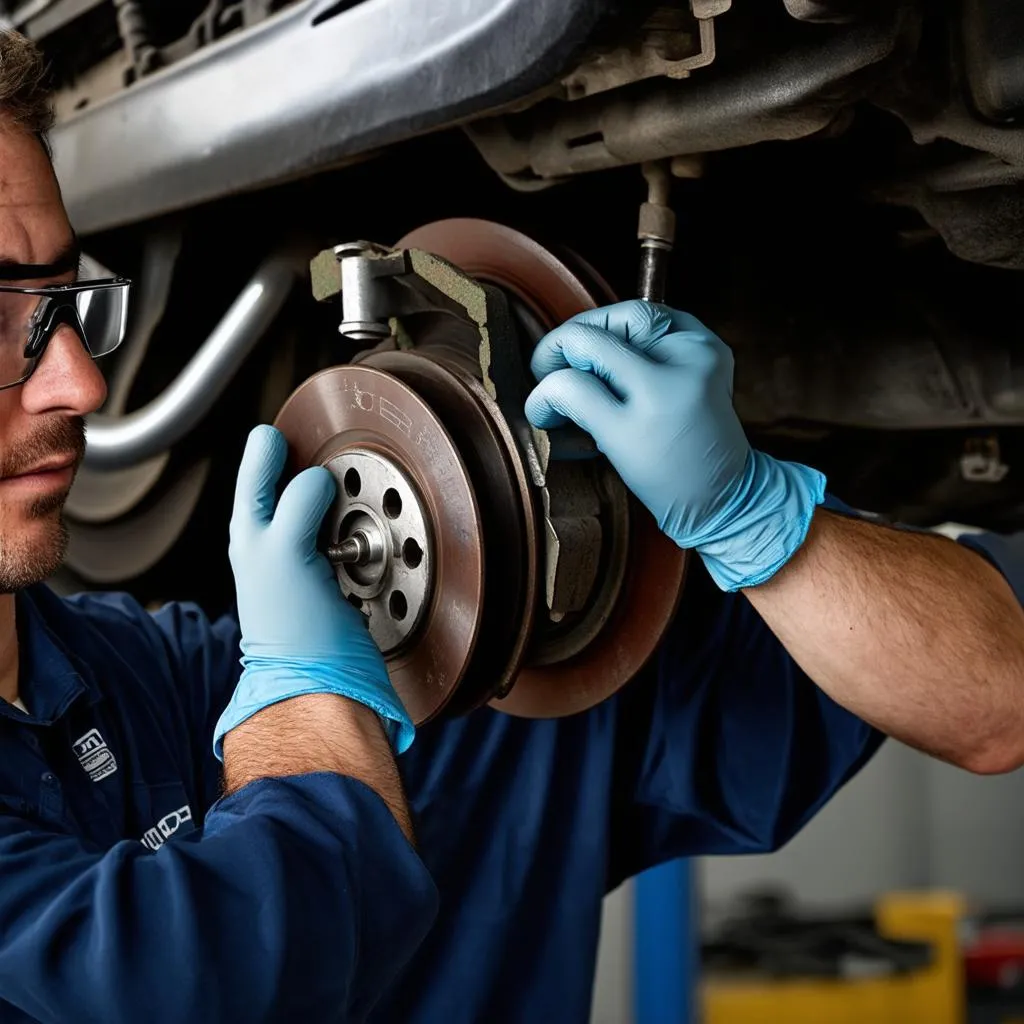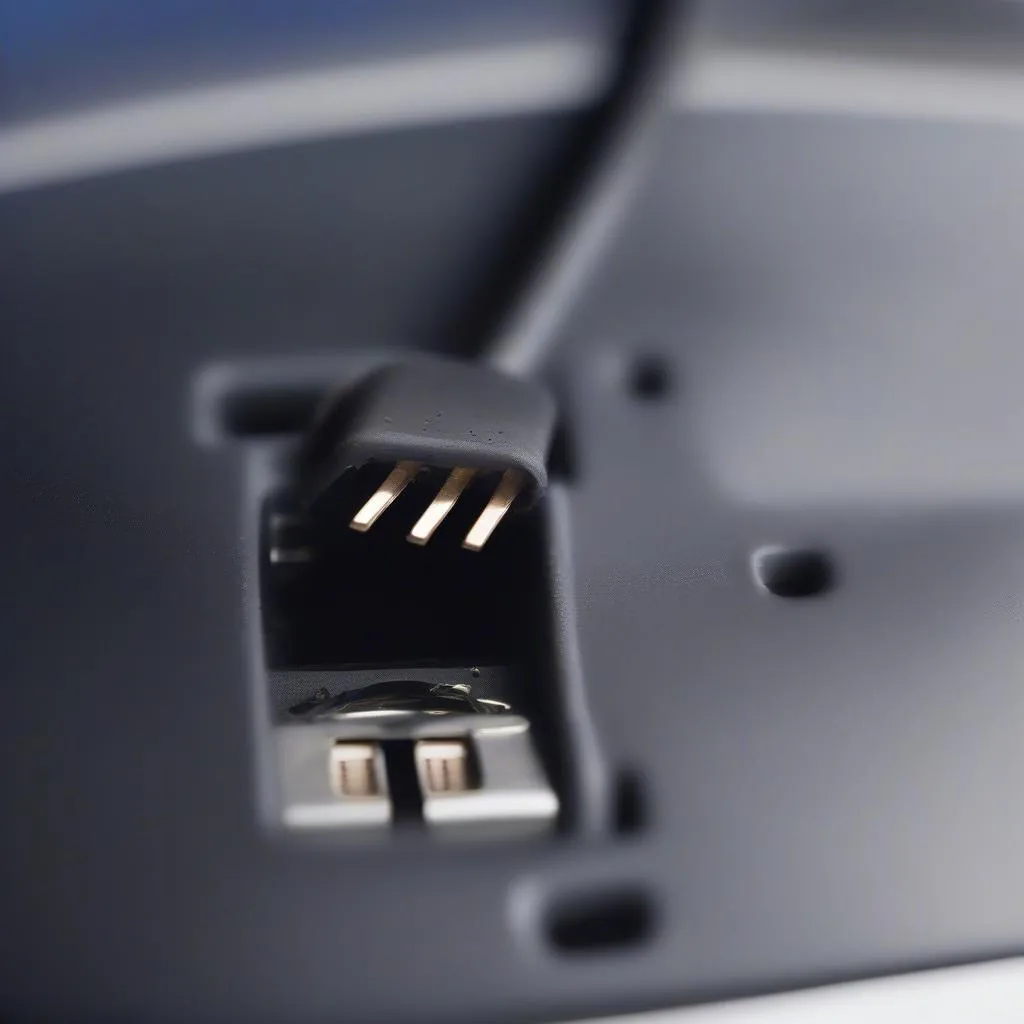Looking to save some money and tackle your Mercedes E350 brake pad replacement yourself? It’s a great way to gain experience with your car’s maintenance, and with the right tools and information, it’s a manageable task for even the DIY novice. This guide will walk you through the essential tools needed to get the job done right.
Gathering Your Arsenal: Essential Tools for the Job
Before you start, ensure you have all the necessary tools laid out. This will make the process smoother and prevent any last-minute runs to the auto parts store. Here’s what you’ll need:
1. Basic Hand Tools:
- Socket Wrench Set: A quality socket set with both metric and standard sizes is crucial. You’ll need various sizes to loosen lug nuts, caliper bolts, and other components.
- Combination Wrenches: Similar to the socket set, a set of combination wrenches in various sizes will come in handy for holding bolts and nuts while loosening or tightening.
- Torque Wrench: Essential for tightening lug nuts and caliper bolts to the correct specifications, preventing damage and ensuring safety.
- Screwdrivers: Both flat-head and Phillips head screwdrivers are needed for tasks such as removing caliper pins and sensor wires.
- Hammer: A rubber mallet is ideal for gently tapping components into place without causing damage.
2. Brake-Specific Tools:
- C-Clamp or Disc Brake Piston Compressor: This tool is vital for compressing the caliper piston back into its bore, creating space for the new, thicker brake pads.
- Lug Wrench: While a socket wrench can work, a dedicated lug wrench often provides better leverage for removing stubborn lug nuts.
- Brake Caliper Grease: This high-temperature grease lubricates caliper pins and prevents sticking and squeaking.
- Brake Parts Cleaner: Cleaning the caliper and surrounding areas removes debris and old brake dust, ensuring optimal performance.
3. Safety Equipment:
- Jack and Jack Stands: Safely lifting your Mercedes E350 is non-negotiable. Never work under a vehicle solely supported by a jack.
- Wheel Chocks: Secure the car on the opposite side of where you’re working to prevent rolling.
- Gloves: Protect your hands from dirt, grease, and potentially harmful brake dust.
- Safety Glasses: Shields your eyes from flying debris during the process.
Optional but Helpful Tools:
- Torque Angle Gauge: For precise tightening of caliper bolts, especially if your car requires a specific torque-plus-angle procedure.
- Brake Bleeder Kit: While not always necessary, it’s a good idea to have this on hand in case you need to bleed the brake system after replacing the pads.
 Brake tool set
Brake tool set
Frequently Asked Questions (FAQs)
Q1: Do I need to bleed my brakes after changing the pads?
You generally don’t need to bleed your brakes unless you open the brake lines or notice a spongy pedal after the replacement. However, having a brake bleeder kit handy is always a good precaution.
Q2: Can I reuse my old brake rotors?
Inspect your brake rotors for wear and tear. If they are within the minimum thickness specification and don’t have significant grooves, you might be able to reuse them. However, replacing them with new pads is generally recommended for optimal braking performance.
Q3: How often should I change my brake pads?
Brake pad lifespan varies greatly depending on driving habits and conditions. As a general rule, have them inspected every 12,000 miles or annually.
Expert Insight: “Regular brake inspections are crucial,” says automotive engineer Dr. Emily Carter from the Automotive Research Institute. “Even if you don’t drive aggressively, factors like environmental conditions and brake pad material can influence wear and tear.”
 Mechanic replacing brake pads
Mechanic replacing brake pads
Important Considerations
- Consult Your Owner’s Manual: Your E350’s owner’s manual is your best friend. It provides specific torque specifications, brake fluid type, and other crucial information for your model year.
- Quality Matters: Investing in quality brake pads from reputable brands ensures optimal performance and longevity.
- Don’t Hesitate to Seek Professional Help: If you’re unsure about any aspect of the process, don’t hesitate to consult a qualified mechanic. Brakes are a critical safety system, and professional assistance is always an option.
Conclusion: Confidently Tackle Your Brake Job
Changing your Mercedes E350 brake pads is a rewarding DIY project that can save you money and provide valuable hands-on experience. By gathering the right tools, following proper procedures, and paying attention to safety, you can complete this task with confidence. For more tips and guidance on automotive maintenance and repair, connect with CARDIAGTECH for expert support.


